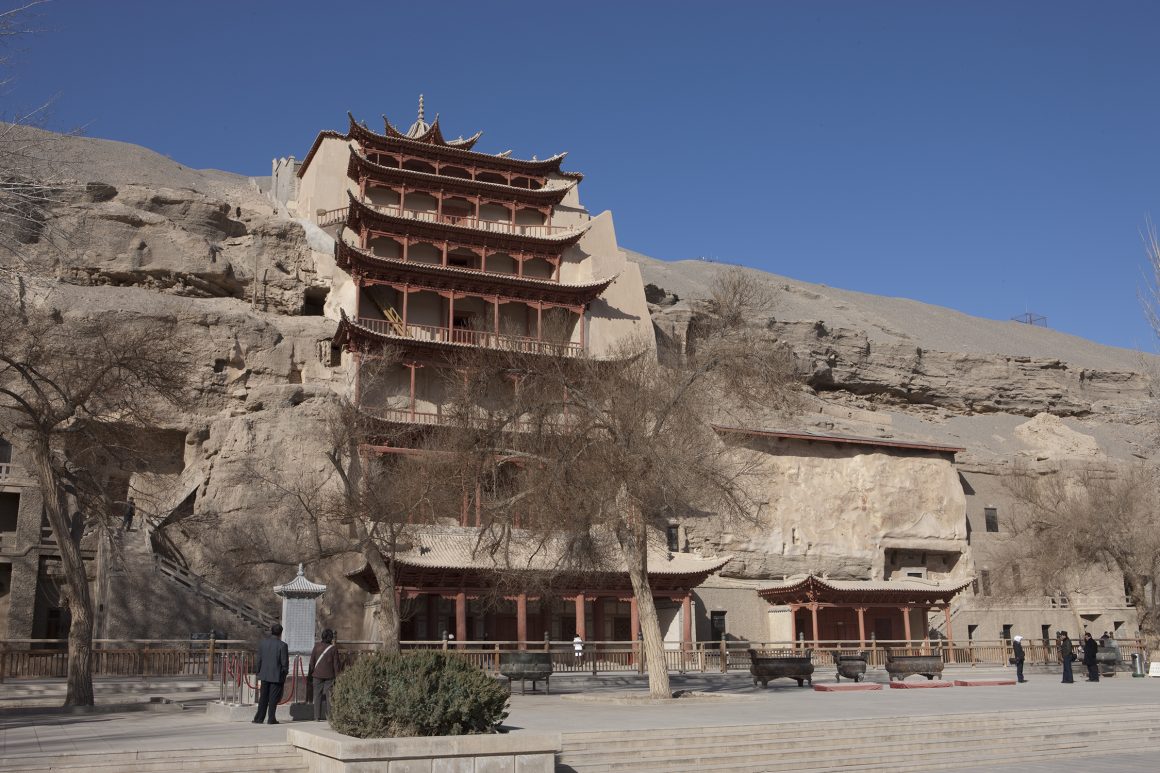Dunhuang, located in the northwestern part of China, holds a significant place in the history and culture of the Silk Road. This ancient oasis town served as a crucial hub along the Silk Road trade route, connecting China with the Western world. Dunhuang’s rich heritage can be traced back over 2,000 years, and its crowning jewel is the Mogao Caves, a UNESCO World Heritage site. This article will explore the historical importance, cultural treasures, and enduring legacy of Dunhuang.
1, Historical Significance:
Dunhuang played a pivotal role as a trading post and cultural crossroads on the Silk Road. Established during the Han Dynasty (206 BCE – 220 CE), it facilitated trade between China, Central Asia, and Europe. The town became an intersection of diverse cultures, fostering exchanges in commerce, religion, art, and knowledge.
2, Mogao Caves:
At the heart of Dunhuang’s cultural legacy are the Mogao Caves, also known as the Thousand Buddha Grottoes. These ancient caves are renowned for their remarkable Buddhist art and scriptures. Constructed over a span of a millennium, from the 4th to the 14th century, the caves contain over 2,000 murals and 45,000 square meters of frescoes. The intricate paintings depict Buddhist sutras, heavenly beings, celestial realms, and scenes from daily life, offering insights into the beliefs, customs, and artistic achievements of ancient China.
3, Library Cave and the Dunhuang Manuscripts:
A remarkable discovery within the Mogao Caves was the Library Cave, also referred to as Cave 17. Sealed for nearly a millennium, it contained a treasure trove of ancient manuscripts, documents, and artifacts. The Dunhuang Manuscripts, numbering around 50,000, include Buddhist scriptures, Taoist texts, Confucian classics, historical records, and a wide array of administrative, legal, and literary documents. These texts, written in various languages and scripts, provide invaluable insights into the social, cultural, and intellectual milieu of medieval China.
4, Cultural Exchange and Influence:
Dunhuang’s position as a melting pot of cultures fostered a vibrant exchange of ideas, religions, and artistic styles. The influence of Indian, Central Asian, Persian, and even Greco-Roman art can be seen in the murals, sculptures, and architectural motifs found in the Mogao Caves. This fusion of artistic traditions created a unique Dunhuang style, which subsequently influenced other regions along the Silk Road and beyond.
5, Preservation and Cultural Heritage:
In recognition of its exceptional historical and cultural significance, the Mogao Caves were designated a UNESCO World Heritage site in 1987. Efforts have been made to preserve and protect the caves and their fragile artworks from natural degradation and human impact. Digitization projects have also made portions of the Dunhuang Manuscripts accessible to researchers and the public, ensuring the long-term preservation of this invaluable cultural heritage.
Dunhuang stands as a testament to the enduring legacy of the Silk Road and the remarkable achievements of ancient civilizations. Its Mogao Caves and the Dunhuang Manuscripts offer a window into the cultural, artistic, and intellectual richness that once flourished along this ancient trade route. As a site of transcultural exchange, Dunhuang continues to captivate and inspire visitors, serving as a bridge between the past and the present, connecting people across time and space.

